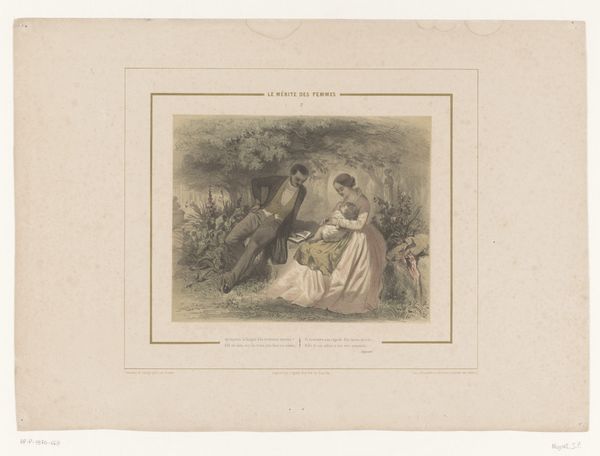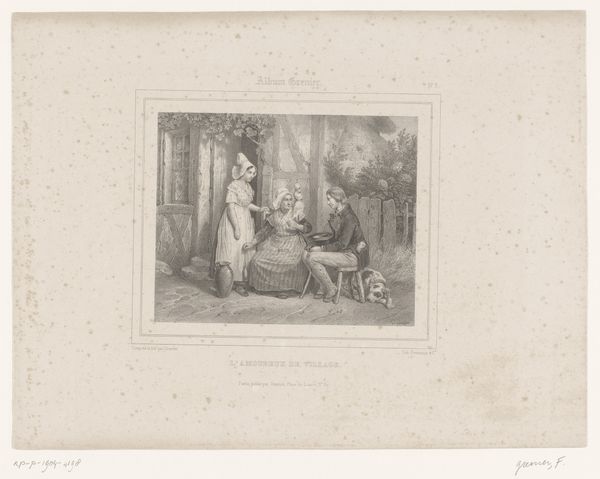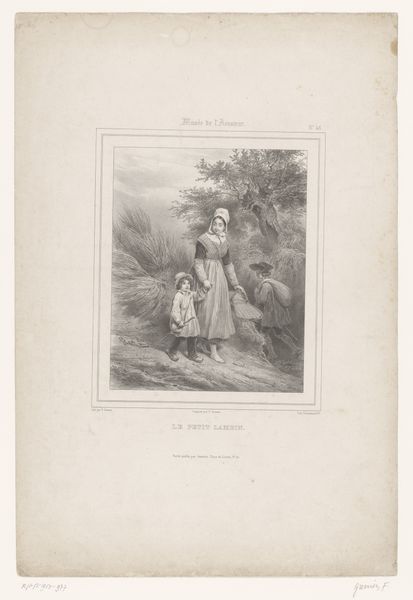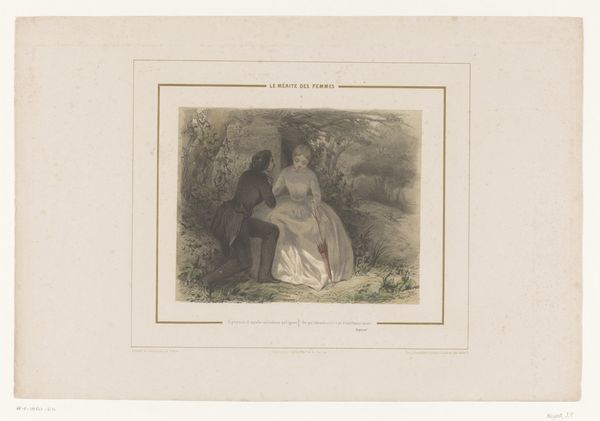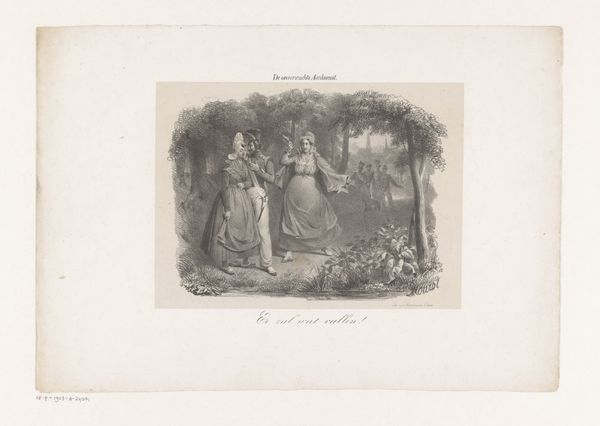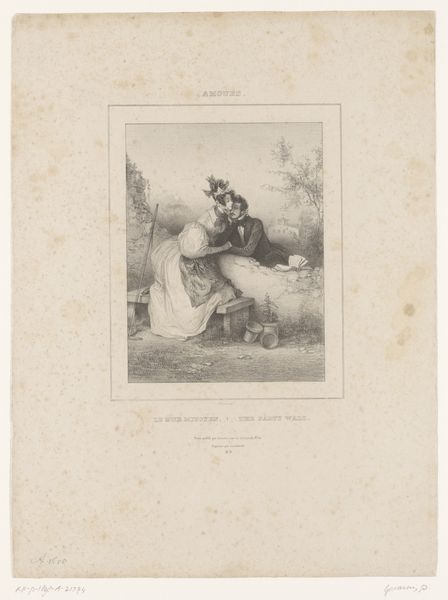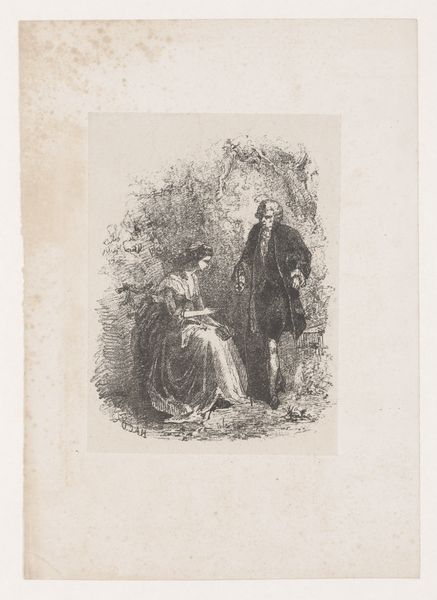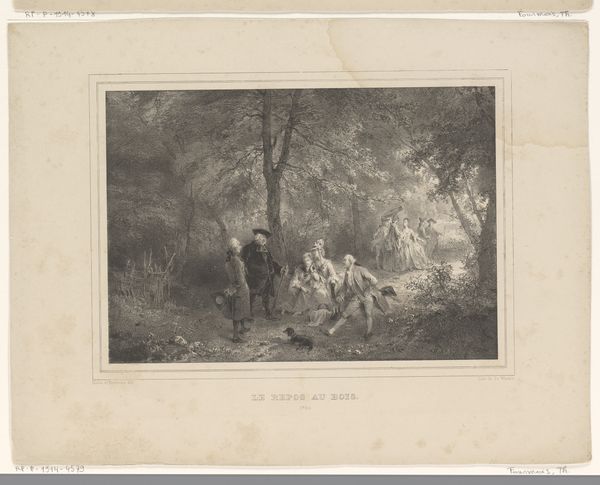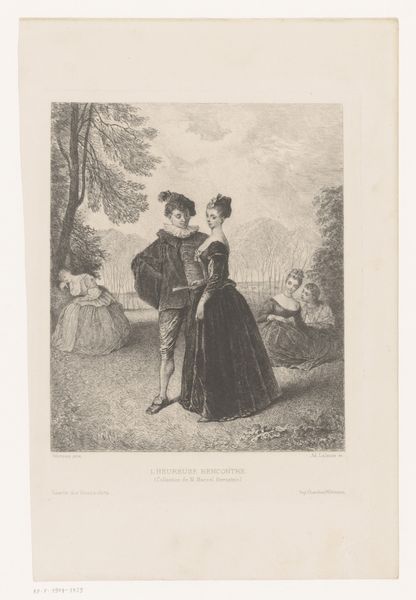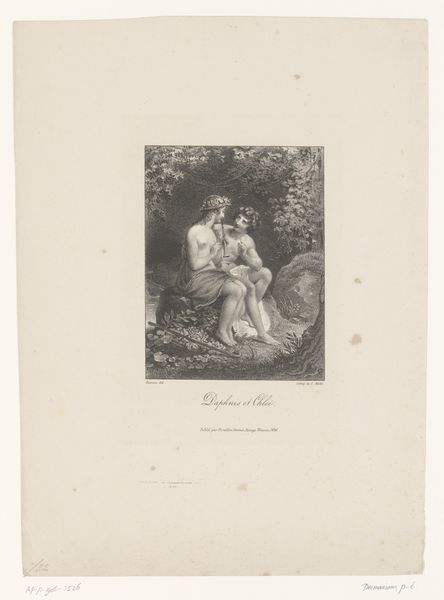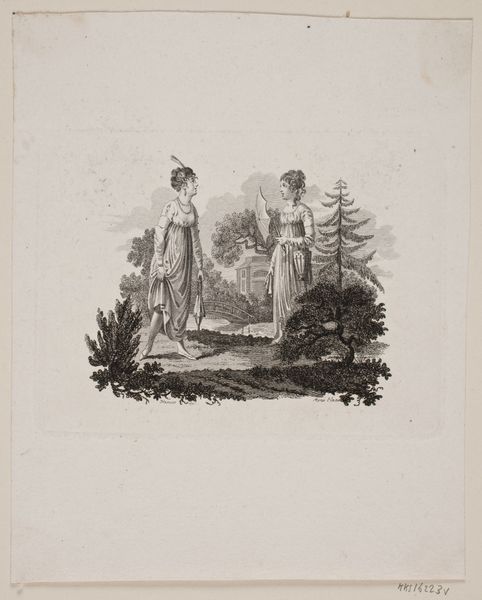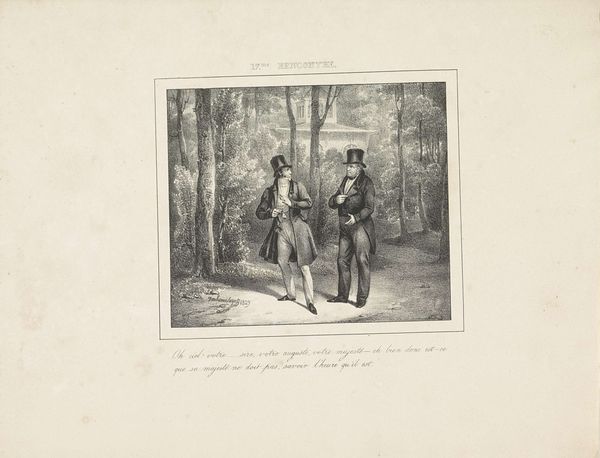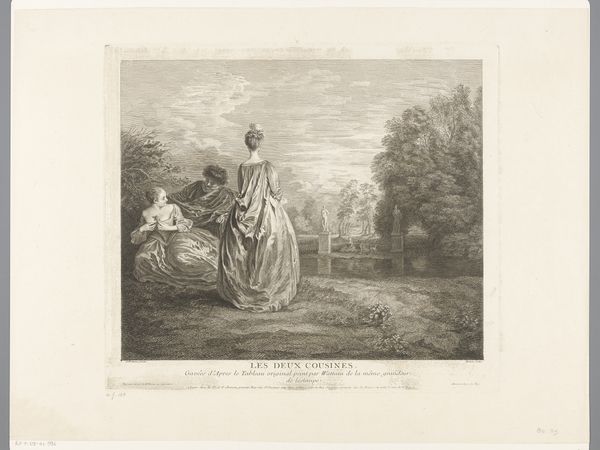
paper, engraving
#
portrait
#
landscape
#
figuration
#
paper
#
romanticism
#
engraving
Dimensions: height 275 mm, width 365 mm
Copyright: Rijks Museum: Open Domain
Curator: This is Jean-Baptiste Madou's "Landscape with Standing Man and a Young Woman on a Bench," created in 1834. It's an engraving on paper, and something about the formality of the figures within that lush, almost overgrown, landscape strikes me. What do you think? Editor: The landscape feels very Romantic, almost staged. What do you see in this piece? Curator: The choice of engraving is fascinating here. Mass-produced prints democratized imagery, making art accessible beyond the elite. So, we must consider the economic underpinnings. Who was consuming these images, and what kind of social commentary were they looking for? The clothing itself speaks of a very distinct, probably wealthy, social class that consumed the engraving for enjoyment. Do you think that the technique and style are challenging the art industry of that time? Editor: Absolutely. It seems to blur lines between high art and something more readily available. How would that have been received then? Curator: This image presents a fascinating interplay of labor and leisure. The engraving process itself involved skilled labor, translated to leisure through its consumption by a certain segment of the public. Its popularity likely spurred further demand and the economic development of that industry and availability of paper. Can you imagine the environmental impact the demand of paper would have generated with such production? Editor: Wow, thinking about the art in terms of labour, consumption, and its material impact provides a new lens to understand its cultural value! I had never thought of engravings in this way before. Curator: Exactly. By considering the materiality and modes of production, we move beyond aesthetic appreciation and examine the artwork's position within broader economic and social systems. Thank you for such enlightening remarks on Romantic art!
Comments
No comments
Be the first to comment and join the conversation on the ultimate creative platform.
